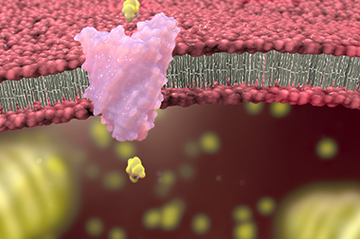Idiopathic Chronic Enteropathy in Older Cats
David A. Williams, MA, VetMB, PhD, DACVIM, DECVIM
University of Illinois at Urbana-Champaign, School of Veterinary Medicine, IL USA
Overview
Up to 40% of cats over 10 years of age are affected by an enteropathy that causes malabsorption of variety of nutrients and protein-losing enteropathy. This presentation reviews common age-related changes and opportunities to halt or reverse the decline in body weight.
Key points
- In cats older than 12 years, obesity is rare, and being underweight is a far greater life-threatening risk factor.
- There is a significant negative correlation between age and fat digestibility: approximately 10- 15% of mature cats (8–12 years) and 30% of geriatric cats (>12 years) have low fat digestibility.
- There is a significant negative correlation between age and protein digestibility, with marked decline becoming particularly prevalent after around 10 years of age. Approximately 20% of cats older than 14 years of age show protein digestibility lower than 77%.
- At the time of initial diagnosis, approximately 50% of hyperthyroid cats have evidence of concurrent intestinal and/or pancreatic abnormalities, often with severe hypocobalaminemia.
- Fecal microbiome and serum metabolome studies have demonstrated significant relationships between the fecal microbiome and cobalamin status, but not with the increased pancreatic marker enzymes.
- Almost 90% of cats with idiopathic chronic enteropathy (ICE) have some pancreatic involvement as reflected in increased serum fTLI and/or pancreatic lipase (Spec fPL).
- An immunoassay for fecal feline α1-proteinase inhibitor (not commercially available) showed increased results in 11 of 15 cats mildly affected with early disease, indicating the presence of a component of protein-losing enteropathy in addition to malabsorption.
- A study of cats fed a nutritionally complete and balanced adult cat food control diet + antioxidants (vitamin E and β-carotene) + a blend of n-3 and n-6 fatty acids + prebiotic (dried chicory root) showed reduced decline in body weight and increased longevity (by more than 1 year) compared with cats fed either a control diet or a control diet + antioxidants.
- A presumptive diagnosis of ICE may be the best that can be achieved, and the approach to management is essentially the same as for patients with confirmed inflammatory bowel disease.
Clinical relevance
Senior cats commonly experience gradual weight loss. If left unchecked, this can tip the scales of life toward death. While it can be difficult to conclusively diagnose underlying pancreatic and/or intestinal abnormalities in cats, there are nutritional strategies to address the gastrointestinal changes that appear to be so common -and detrimental- in aging cats.
This document contains summaries of all presentations from the Companion Animal Nutrition Summit, held May 3-5, 2018 in Charleston, South Carolina. Please note that these summaries represent overviews of the presentations and may include opinions and research of presenters, which do not necessarily reflect those of the Nestlé Purina Petcare Company.
Produced by the Purina Institute, May 21, 2018


